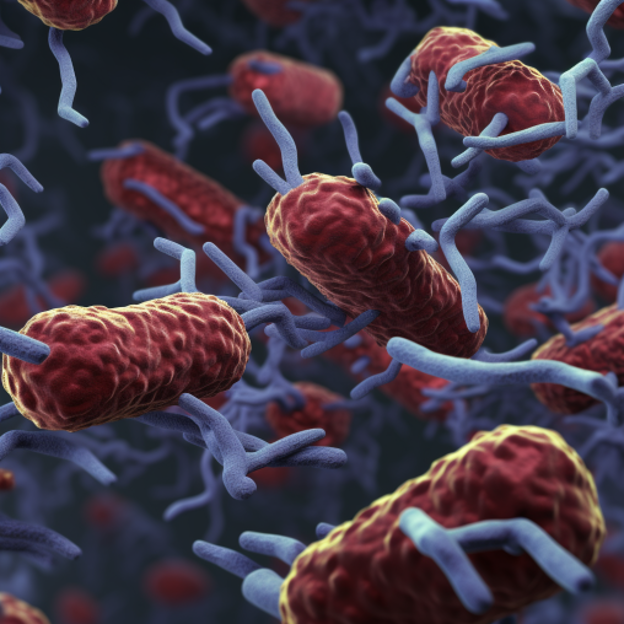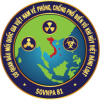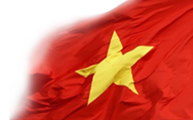Botulinum: Deadly toxic and risk of using as a Biological weapon
Although C. Botulinum has been found to be effective in treating wrinkles and muscle problems, it is a highly toxic substance that can lead to paralysis and even death. This makes it a potential weapon for biological warfare and emphasizes the importance of understanding its risks and taking necessary precautions to prevent its misuse.

Clostridium Botulinum (C. Botulinum)
A good example of the danger of Botulinum toxin is the Botulism case on May 13, 2023. In Ho Chi Minh City, Vietnam recorded 2 clusters of Botulism group A cases including 3 children and 3 adults. Three children were treated at Children’s Hospital 2 and fortunately survived thanks to the infusion of Botulism Antitoxin Heptavalent (BAT). After that, due to the lack of antidote, 3 adults could only be resuscitated by mechanical ventilation, progressed to almost complete paralysis, one person later died.
So what is Botulinum toxin? This is a neurotoxin that is a polypeptide chain with a molecular weight of 150 thousand Daltons. Botulinum toxin consists of 8 types, denoted by letters from A to H (Botulinum type H was discovered in 2013 by biologist Nir Dover and colleagues), in which poisoning types A and B are common. the most common, then E and F, the remaining types are less common. Botulinum toxin is a neurotoxin produced by various species of bacteria in the genus Clostridium, including: C. botulinum, C. butyricum, C. baratii and C. argentinense, all controlled (as a dual-used goods biologic agents) by Australia Group (AG). When exposed through taste, smell…, Botulinum toxin causes botulism, leading to muscle paralysis. Typical symptoms of Botulinum toxicity include blurred vision, progressive loss of speech, jaw weakness, drooping eyelids, headache, nausea, and loss of control. If left untreated, it can lead to respiratory failure, permanent nerve damage, or death.
C. Botulinum is a Category A infectious substance with the shipping code UN 2814 (2814 is the code for agents that are particularly dangerous, capable of causing permanent disability or fatal disease in otherwise healthy humans or animals when exposure to it occurs). Europe controls C. Botulinum via control code 1C351.c.10.
Typical Applications: In addition to basic research on the biology of C. Botulinum and development of antitoxins, C. Botulinum is also used for medical procedures, cosmetic applications. Currently, Botulinum groups A and B are the main active ingredients in the Botox, which is used to repair overactive muscles. In addition, when injected locally under the skin in small amounts, Botulinum toxin can erase wrinkles, treat misaligned eyes syndrome, migraine, and eliminate night sweats.
However, besides the above advantages, Botulinum toxin poses a threat as a biological weapon, for the following reasons:
First, Botulinum toxin virulence: The lethality of Botulinum toxin stems from its ability to cause Botulinum toxicity, which is potentially fatal. When exposed through taste, smell, touch or directly into the bloodstream, even very small amounts of the toxin can lead to muscle paralysis, respiratory organ damage, and ultimately respiratory failure. and death. The powerful effect of Botulinum toxin makes it at risk of becoming a biological weapon with terrible destructive power, according to the World Health Organization (WHO) LD50 of Botulinum toxin is 2 ng/kg, 1kg can kill 1 billion people.
Second, ease of purchase and ease of production: One of the main concerns about using Botulinum toxin as a biological weapon is its easy accessibility. C. botulinum is ubiquitous in nature, with spores found in soil, dust, and sediment. Bacterial isolation and culture is fairly easy with the right expertise and equipment (simply collect samples from media suspected of containing Botulinum in soil or sediment. These samples are then cultured. culture in growth medium to facilitate bacterial growth, then, using techniques such as streak culture, dilution and selection of the medium to isolate and purify the desired bacteria), this raises concerns about the potential for illegal production and abuse by individuals and organizations for bioterrorism purposes.
Third, difficult to detect: Botulinum toxin detection poses a significant challenge due to its colorless, odorless and tasteless properties. Traditional detection methods, such as laboratory analysis or sensors, require specialized equipment and expertise, making it difficult to determine its presence quickly and accurately, especially in situations where there is a risk of bioterrorism.
Given the potential threats of the use of Botulinum toxin as a biological weapon mentioned above, it is necessary to take many coordinated measures to prevent the risk of using Botulinum as a biological weapon, in which the following measures should be taken well:
First, preparedness and response measures: The danger posed by Botulinum toxin is a significant concern for governments and public health organizations globally. As a result, various measures have been implemented to enhance prevention and response capabilities. These measures include the development of diagnostic tests, stockpiling antitoxins, and setting up surveillance systems to detect, track, and prevent outbreaks. Being prepared and responding rapidly in the event of an outbreak is critical to prevent the risk of using Botulinum as a biological weapon.
Second, international cooperation: Addressing the threat that botulinum toxin can be used as a biological weapon requires close international cooperation and frequent information sharing among nations. Collaborative efforts could focus on intelligence gathering, sharing best practices for detection and response, and implementing measures to prevent trafficking, production, and transportation. and illegal possession of Botulinum toxin.
Third, comply with the International Conventions on the Non-Proliferation of Biological Weapons. compliance with international conventions against biological weapons, such as the Biological Weapons Convention (BWC) 1972, is crucial. The BWC is a global treaty that prohibits the development, production, acquisition, and stockpiling of biological weapons. It also promotes transparency, confidence-building measures, and international cooperation to prevent the use of biological agents for hostile purposes. States that are party to the convention commit to destroying existing stockpiles, enhancing surveillance capabilities, and sharing information to detect and respond to potential bioweapons threats. Adhering to the BWC helps create a framework for accountability and fosters collective efforts to counter the threat of botulinum toxin and other dangerous biological agents.
Huy Hiep-Center 81






